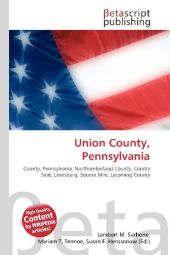One result with regard to the relevance of the communication channels is that Instagram is the second strongest platform for the candidates for chancellor after Twitter. For the parties, however, the ranking is Twitter ahead of Facebook.
In the social media race of the Chancellor candidates for the favor of the votes in the network, Annalena Baerbock (Greens) is at the top by a large margin. Baerbock’s accounts even generate more follower reach than the national party accounts of the Greens. On Instagram, Facebook and Twitter, Baerbock is in a follower comparison with a total of 459,000 fans, ahead of Armin Laschet (240,000) and Olaf Scholz (190,000).
Of greater relevance, however, is the fact that Baerbock also achieved the best engagement values. The engagement value is calculated from the relationship between interactions and followers. Baerbock’s leadership role is particularly evident on Instagram. There she has three times more followers than Laschet and even nine times more than Scholz.
Click to enlarge the image
The posting power of the Chancellor candidates
A look at the number of social media posts on Insatgram, Facebook and Twitter in the period from January 1st to May 24th reveals the following situation: The fewest posts were posted on Baerbock’s accounts with 400 posts. Laschet’s accounts show only slightly more activity with 472 posts. With a total of 1,023 contributions, Scholz is clearly in the lead. His Twitter account is particularly noticeable with 752 tweets: This corresponds to an average of five tweets per day in the period examined.
The politicians with the most followers
In their exposed political offices, prime ministers and party leaders are also the focus of attention on social networks. This is shown by the ranking of the politicians with the most followers. The three top German politicians with the highest reach on Facebook, Instagram and Twitter are Christian Lindner (FDP) ahead of Michael Sonneborn (Die Party) and Markus Söder (CSU). Unlike Scholz, the Chancellor candidates Baerbock and Laschet managed to jump into the top 5. However, their number of followers is well below that of Lindner, Sonneborn and Söder.

Lindner benefits from the fact that he made digitization his topic in the 2017 federal election campaign and that he has built up a high reach thanks to the continuous, high-quality display of his channels.
Prime Minister rankings: Söder leads, Laschet in the top group
Among the Prime Ministers, Söder clearly leads the follower and engagement rankings. Laschet offers a strong performance with placements in second and third place. The Prime Ministers of Schleswig-Holstein and Lower Saxony, Daniel Günther (CDU) and Stephan Weil (SPD), landed at the bottom of both rankings between places eight to ten. The mayors of Hamburg and Bremen, Peter Tschentscher (SPD) and Andreas Bovenschulte (SPD), do not make it into one of the top ten places in both rankings.

Click to enlarge the image
Conclusion
Social media channels are particularly suitable for current topics as communication platforms for parties and politicians. A digital election campaign can therefore be expected in which the reach of the Chancellor and top candidates could play a decisive role. It will be exciting to see how the reach of the candidates develops in the coming months. Given the considerable reach, social media content will have a relevant influence on the formation of opinions and thus also on the choice.
Parties and politicians should fine-tune content strategies for social media even more. In contrast to third-party media, social media channels enable an unfiltered approach and spontaneous placement of one’s own points of view.
You can find the full analysis here.
–


